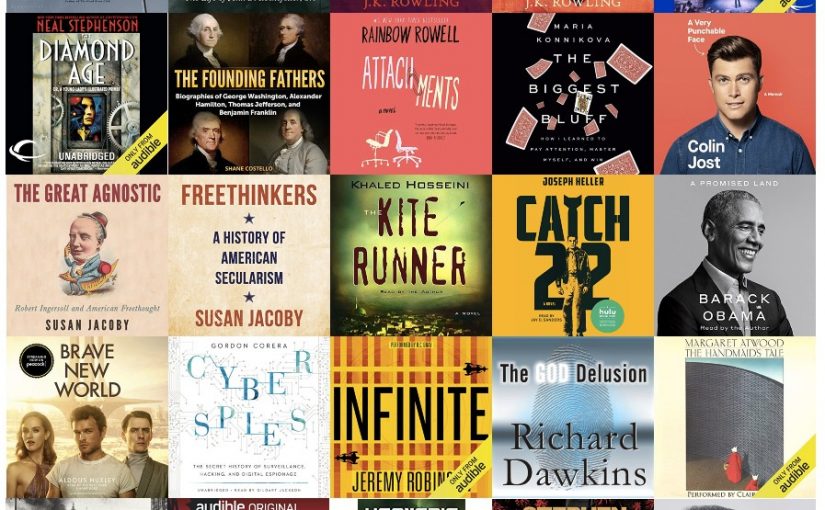I’ve heard that relocating is one of the top 3 most stressful life events, right along with getting married and having a child. In 2022, I took a new job that required a relocation to the Milwaukee area. It’s been tough to make the change, but it still feels like this was the right move to make, personally and professionally.
In reflection on the books I read this year, I recognize the mixture of learning how to manage the life changes (ie. The first 90 days, How to Tell a Story) mixed with a healthy dose of escapism (The Silent patient, lord of the Flies, Dad is Fat, etc…). I’ve thoroughly enjoyed many of the books on this list, and have even marked a few as potential re-reads!
While this year, my reading list is slightly less than previous years, I’ve been also enjoying soaking in a variety of podcasts that scratch a variety of itches (go-tos include: Sound Opinions, Your Moms House, Revisionist History, Freethought Radio and Bill Burr).
As the year reaches the end, I still find this act of chronicling my reading to be a great introspective / retrospective excersise. Now that I have record of this over the past, 5 years, it’s pretty cool to look back and trigger memories from the shelfs of books that I’ve consumed. Hope you enjoy!
- Tomorrow, and Tomorrow, and Tomorrow: A Novel – Gabrielle Zevin
- The Silent Patient – Alex Michaelides
- Ritual: How Seemingly Senseless Acts Make Life Worth Living – Dimitris Xygalatas
- Recursion: A Novel – Blake Crouch
- How to Tell a Story: The Essential Guide to Memorable Storytelling from The Moth – The Moth , Meg Bowles , Catherine Burns , Jenifer Hixson , Sarah Austin Jenness , Kate Tellers , Padma Lakshmi , Chenjerai Kumanyika
- The Terminal List: A Thriller – Jack Carr
- The First 90 Days, Updated and Expanded: Proven Strategies for Getting Up to Speed Faster and Smarter – Michael Watkins
- Lord of the Flies – William Golding
- Dad Is Fat – Jim Gaffigan
- Ordinary Men: Reserve Police Battalion 101 and the Final Solution in Poland – Christopher R. Browning
- The Blank Slate: The Modern Denial of Human Nature – Steven Pinker
- First, Break All the Rules: What the World’s Greatest Managers Do Differently – Marcus Buckingham
- Gone Girl: A Novel – Gillian Flynn
- Project Hail Mary – Andy Weir
- The Hiding Place – Corrie ten Boom


